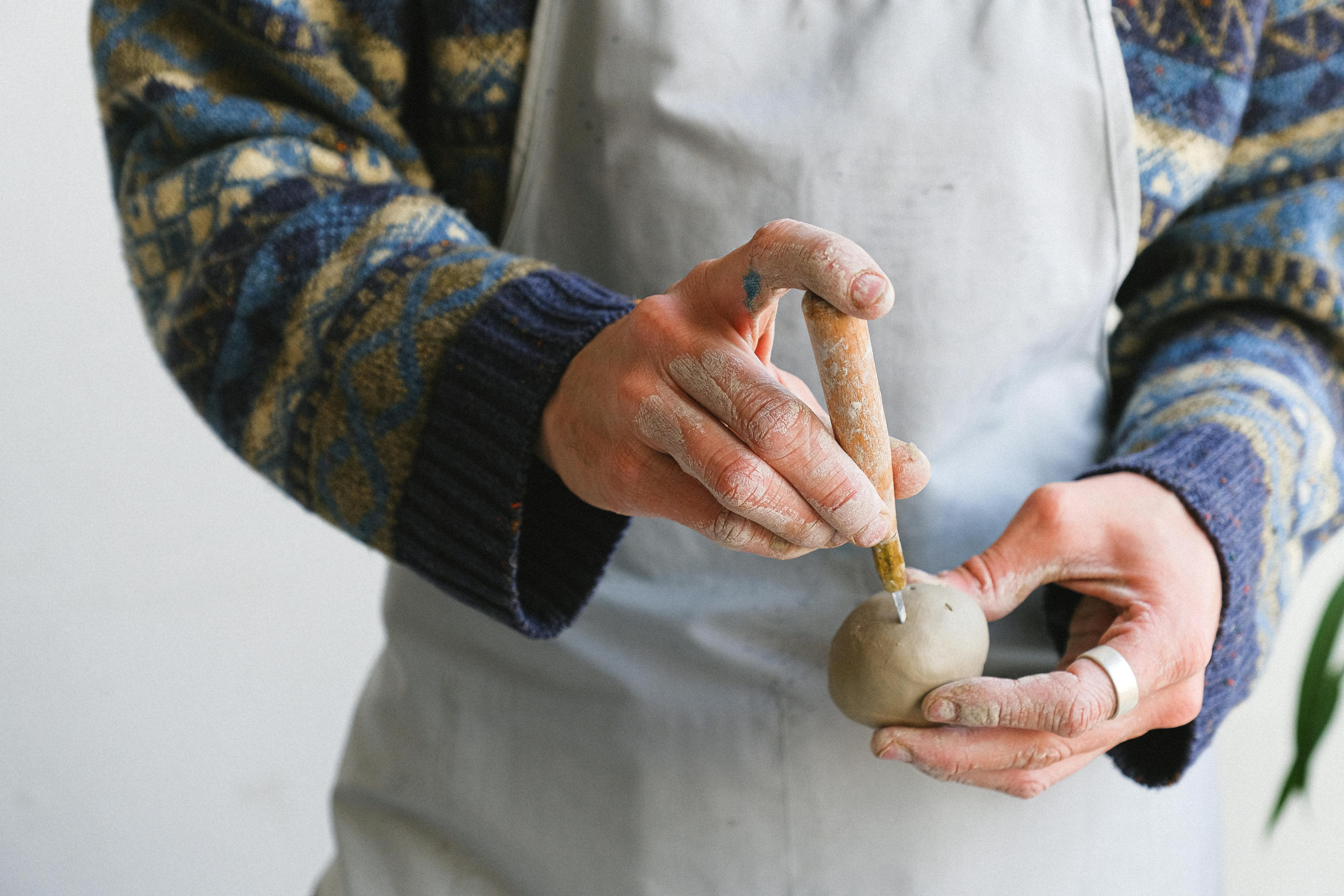Ball joints are an essential component of a vehicle’s suspension system, allowing the suspension to move up and down while keeping the wheels firmly connected to the car. They are comprised of a series of steel components that act as pivots between the vehicle’s control arms and the steering knuckles. The ball-joints/” title=”How To Check Ball Joints”>ball joint allows for a wide range of movement while maintaining a secure connection between the two parts. In order for ball joints to work properly, they must be lubricated regularly and checked for wear and tear. Understanding how ball joints work is essential in ensuring their longevity and proper operation.A ball joint is a type of hinge used to connect two parts of a vehicle. It usually consists of a spherical bearing encased in a metal housing, and works by allowing the two parts to pivot relative to each other. Ball joints are commonly found in steering systems, suspension systems, and other automotive applications.
Where are Ball Joints Located?
Ball joints are suspension components that are located between the control arms of a vehicle and the steering knuckles. Their main purpose is to provide a secure connection for the suspension and steering components, allowing them to pivot and move freely as the wheel turns. Ball joints are essential for providing a smooth ride as they absorb road shocks and vibrations, helping to maintain vehicle stability. They also help keep the tires in constant contact with the road surface, providing adequate traction and better handling. Over time, ball joints can wear out due to normal driving conditions or extreme usage, which can cause excessive tire wear, loose steering, or even complete suspension failure if left unchecked. For this reason, it is important to regularly inspect your vehicle’s ball joints for signs of wear and tear so that they can be replaced before any serious damage occurs.
The majority of vehicles have four ball joints: two upper control arm ball joints and two lower control arm ball joints. The upper control arm ball joint is located near the top of the wheel hub assembly where it attaches to the frame of the vehicle. The lower control arm ball joint is located near the bottom of the wheel hub assembly where it attaches to both sides of the frame. Both types of ball joints typically require a special socket or wrench to remove them from their mounting points in order for replacement or repair work to be done properly.
Types of Ball Joints
Ball joints are mechanical parts used to connect the suspension system to the steering system in motor vehicles. They are an essential component of a vehicle’s suspension and steering systems, allowing for movement in multiple directions and providing stability. Ball joints come in a variety of shapes and sizes, and there are four main types: universal, press-in, flange-ball, and stud-type.
Universal ball joints are designed with two separate pieces that can be separated and reassembled to adjust length or angle. This makes them ideal for off-road vehicles as they can be used to create a wide range of angles and lengths. They are also relatively easy to install and remove due to their two-piece design.
Press-in ball joint designs feature a threaded shaft that is inserted into the suspension arm or control arm. These types of ball joints provide more stability than universal joints, but they require more effort to install due to their one-piece design.
Flange-ball ball joint designs feature a flanged head that is inserted into the suspension arm or control arm. These types of ball joints provide more stability than press-in designs as they are less likely to become loose over time due to their flanged head design.
Finally, stud-type ball joint designs feature a threaded stud that is inserted into the suspension arm or control arm. These types of ball joints provide greater stability than either the universal or press-in designs, but they require more effort to install due to their one-piece design.
How Does a Ball Joint Work?
A ball joint is a type of mechanical fastener used to connect two parts of a vehicle. It acts like a flexible hinge that allows movement in multiple directions, while maintaining the structural integrity of the connection. The ball joint consists of two parts: an inner and outer housing, which enclose a ball-and-socket assembly. This assembly consists of the ball, which is attached to one side of the joint, and the socket, which is attached to the other side. The socket has two grooves that fit around the circumference of the ball, creating a secure connection between both components. When pressure or torque is applied on one side of the joint, it causes movement in both directions due to the flexibility of the inner and outer housings. In this way, ball joints are able to absorb shock or vibration while allowing for free movement between connected components.
What Components Make Up a Ball Joint?
A ball joint consists of two main components: the housing and the ball. The housing is typically made from metal, while the ball is either made from metal or plastic. The housing holds the ball in place and provides a connection between two parts of a vehicle, allowing them to move independently of one another. The ball itself is a round sphere with a hole in the center, which allows it to pivot and rotate on its axis. This allows for movement in multiple directions, allowing for increased flexibility and maneuverability when driving. Additionally, the ball joint helps reduce vibration by absorbing shock from uneven road surfaces. Ball joints are essential components of most vehicles’ suspension systems, helping ensure that vehicles remain stable while driving and providing better handling and performance.

The Benefits of Ball Joints in Automobiles
Ball joints are essential components of a vehicle’s suspension system, providing the connection between the steering knuckles and control arms. They allow the suspension to move up and down while still providing the driver with precise steering control. Ball joints also provide increased durability, flexibility, and improved handling.
One of the main benefits of ball joints is their increased durability compared to other suspension components. This is because ball joints are typically made from a strong steel material that can handle high levels of stress without breaking or wearing down. As such, they can last for many years if they are properly maintained and lubricated. In addition, ball joints also provide flexibility in their movement, allowing for better handling on uneven surfaces or during sharp turns.
Another benefit of ball joints is their ability to reduce vibration from road conditions. The flexible nature of the joint helps absorb any shocks or vibrations that may occur while driving over rough terrain. This helps improve overall driveability and road comfort by reducing road noise and avoiding any jarring sensations when driving over bumps or potholes.
Finally, ball joints can help improve overall vehicle performance by allowing for better steering control and improved handling at high speeds. The increased flexibility provided by the joint allows for more precise steering around tight corners or during aggressive maneuvers on winding roads. In addition, it allows for better stability when driving at higher speeds since there is less resistance from the suspension components when turning corners quickly or going over bumps in the road.
Overall, ball joints provide numerous benefits to automobiles in terms of increased durability, improved performance, reduced vibrations, and better handling on uneven surfaces or during sharp turns. As such, they are an essential part of any vehicle’s suspension system and should be regularly checked and maintained to ensure optimal performance throughout its life span.
Signs That You Need to Replace Your Vehicle’s Ball Joints
One of the most important components of a vehicle’s suspension system is the ball joint. It is responsible for connecting the control arm to the steering knuckle. Over time, they can wear out, and when they do, it can lead to some serious problems. Knowing the signs that you need to replace your vehicle’s ball joints can save you from having more expensive repairs down the road. Here are some of the signs that your vehicle may need new ball joints.
One of the most common signs that you need to replace your vehicle’s ball joints is a loud clunking noise coming from underneath your car while driving over bumps or dips in the road. This noise is caused by loose ball joints, which can cause significant damage if left unchecked. If you hear this noise, you should have it checked out as soon as possible.
Another sign that your vehicle may need new ball joints is when your car pulls to one side while driving on a flat surface. This usually happens when one of the ball joints has worn out and can cause an uneven distribution of weight on each wheel. If you notice this happening, it’s best to get it checked out right away.
You may also notice excessive vibration in your steering wheel when driving at higher speeds. This is usually caused by worn out ball joints that are no longer providing enough support for the wheels. If you feel a lot of shaking or vibration in your steering wheel, it’s best to have it looked at by a professional.
Finally, if you notice uneven tire wear on one side of your car or if there is excessive play in the steering wheel, then chances are that one or more of your vehicle’s ball joints has worn out and needs to be replaced. Uneven tire wear can also be caused by other issues such as misaligned wheels or worn-out suspension components, so it’s best to have it inspected by an experienced technician.
These are just some of the signs that you need to replace your vehicle’s ball joints. If you notice any of these symptoms occurring with your car, make sure you get it checked out right away so that any potential problems can be avoided before they become more serious and costly repairs later on down the road.
Maintaining Your Car’s Ball Joints
Maintaining your car’s ball joints is important for overall vehicle performance and safety. Ball joints are critical components of your vehicle’s suspension system, and they help to keep the wheels in alignment and provide a smooth ride. If they become worn or damaged, they can cause significant problems such as poor handling and increased wear on other suspension components. To ensure your car’s ball joints are in good condition, it is important to regularly inspect them for signs of damage or wear and to make sure they are properly lubricated.
If you’re not comfortable inspecting your car’s ball joints yourself, it is best to take it to a professional mechanic who can perform a thorough inspection and make any necessary repairs or adjustments. A professional will be able to spot any signs of wear or damage that you may have missed, as well as give your car an overall check-up to make sure everything is in good working order. During the inspection, the mechanic will look for signs of corrosion, wear, or other damage that could affect the performance of the ball joint.
Once any necessary repairs have been made, it is important to keep the ball joints properly lubricated at all times. This means regularly checking the oil level and replacing it when needed. It is also important to check the grease level in the ball joint itself, as this helps keep it lubricated and running smoothly. If you find that your car’s ball joints are becoming dry or worn out quicker than normal, then you may need to replace them with new parts.
Finally, if you notice any strange noises coming from the suspension system such as clunking or grinding sounds when turning corners or driving over bumps then it is likely that there may be an issue with one of the ball joints. In this case, it is best to take your car into a professional mechanic immediately so that they can diagnose and repair any problems before they become more serious. Keeping your car’s ball joints properly maintained will help ensure that your vehicle runs smoothly and safely for years to come.

Conclusion
Ball joints are a crucial part of the suspension system of a vehicle and play an important role in maintaining the car’s safety as well as its handling. Without ball joints, the suspension system would be unable to move freely, resulting in reduced efficiency and maneuverability. Ball joints help ensure that your vehicle operates safely and smoothly by allowing it to make turns and absorb impacts from bumps in the road. When it’s time to replace your ball joints, it is important to choose a quality part that will last.
Keeping an eye on your ball joints is essential for ensuring the safety of you and your passengers. Making sure they are well-maintained and replaced when necessary is an important step in ensuring that your car runs smoothly for years to come.




